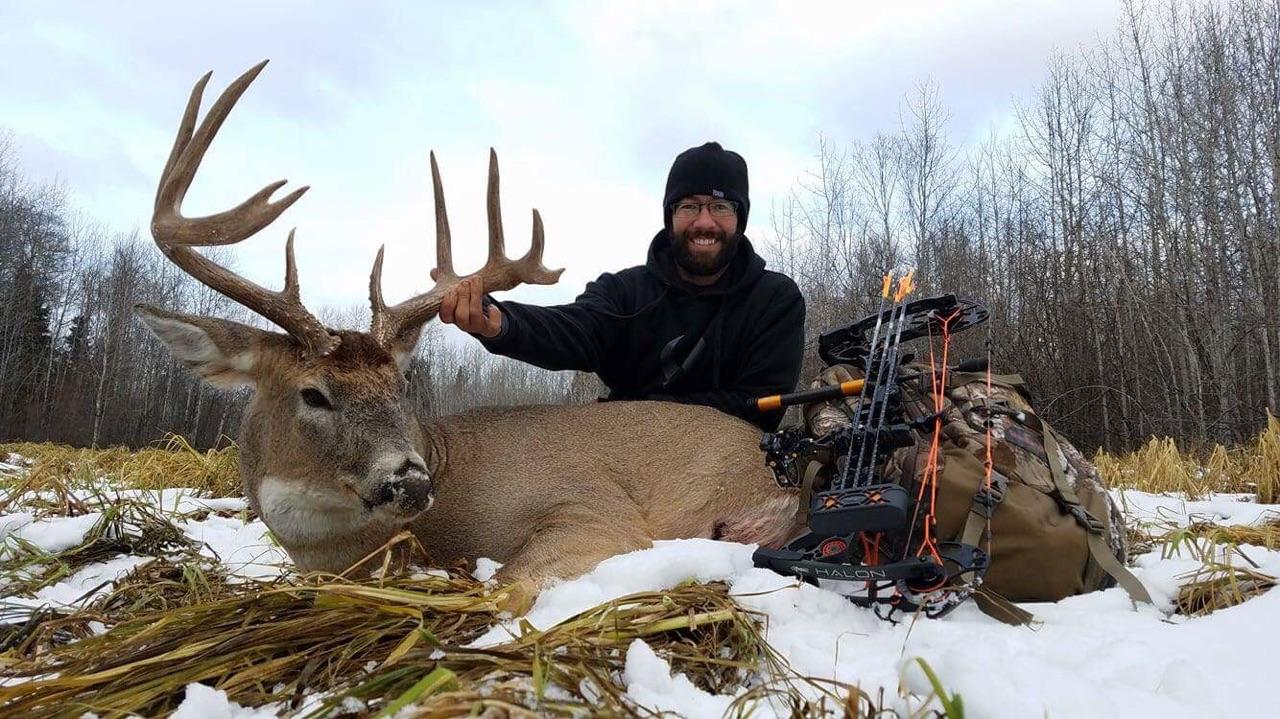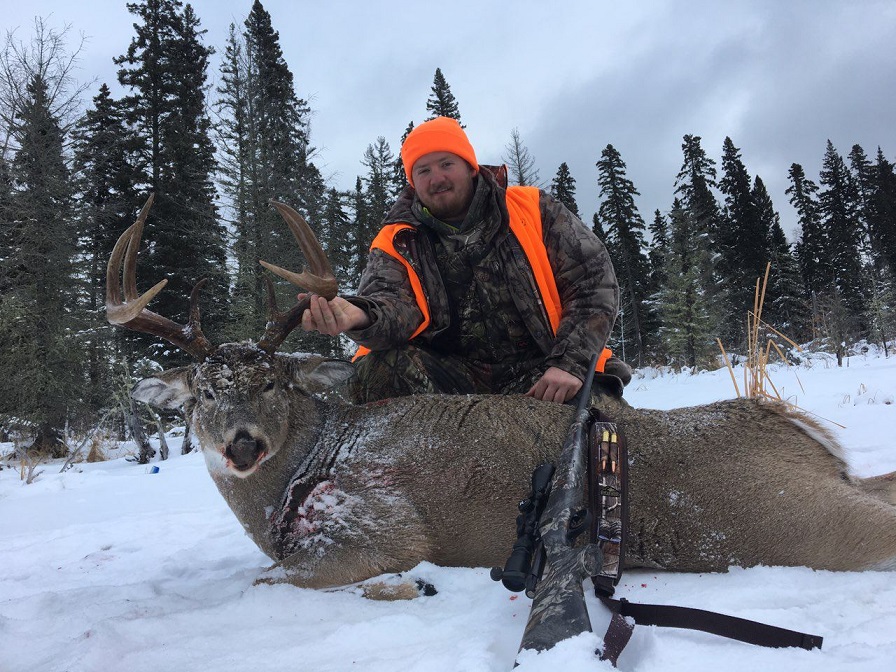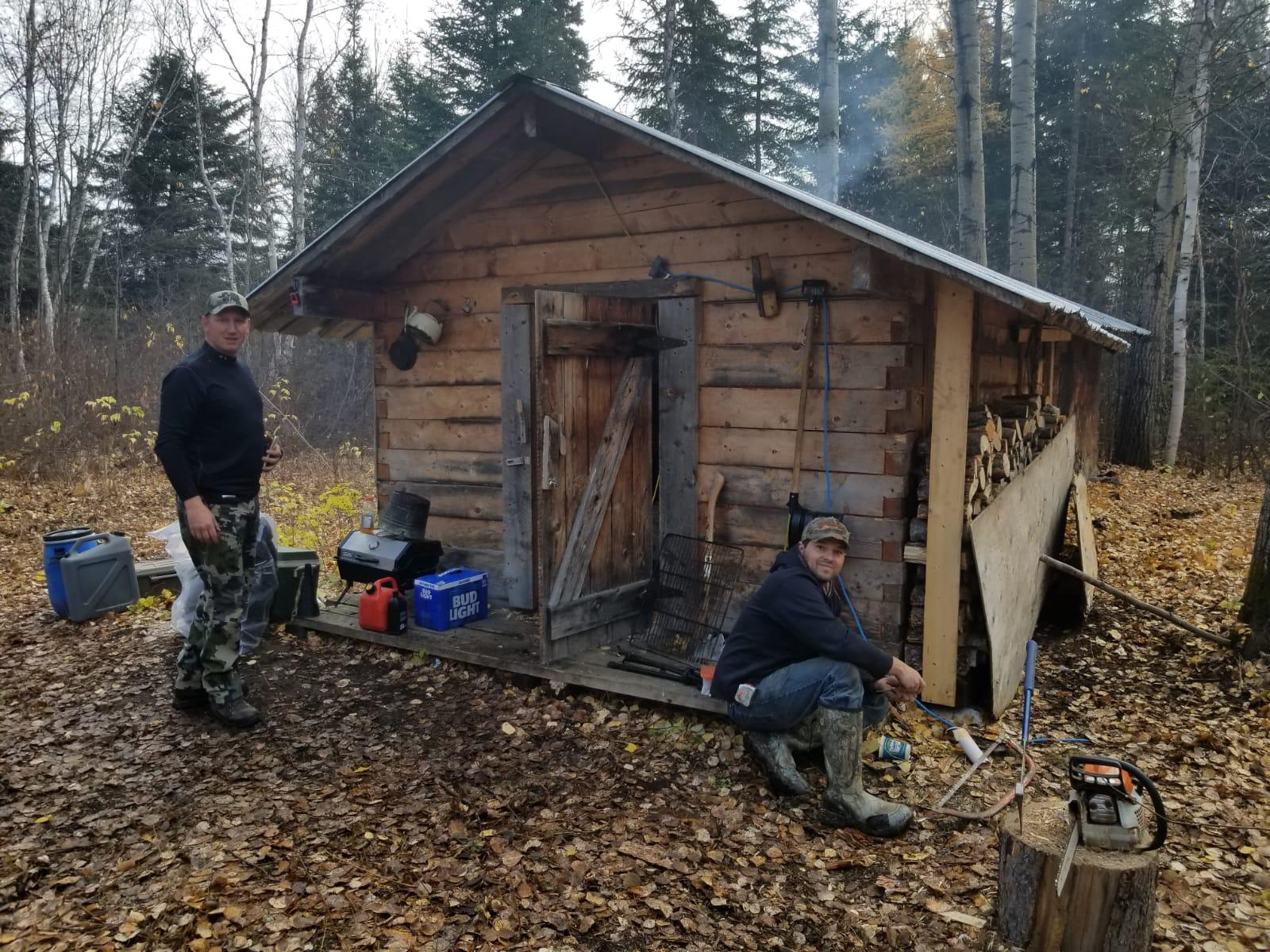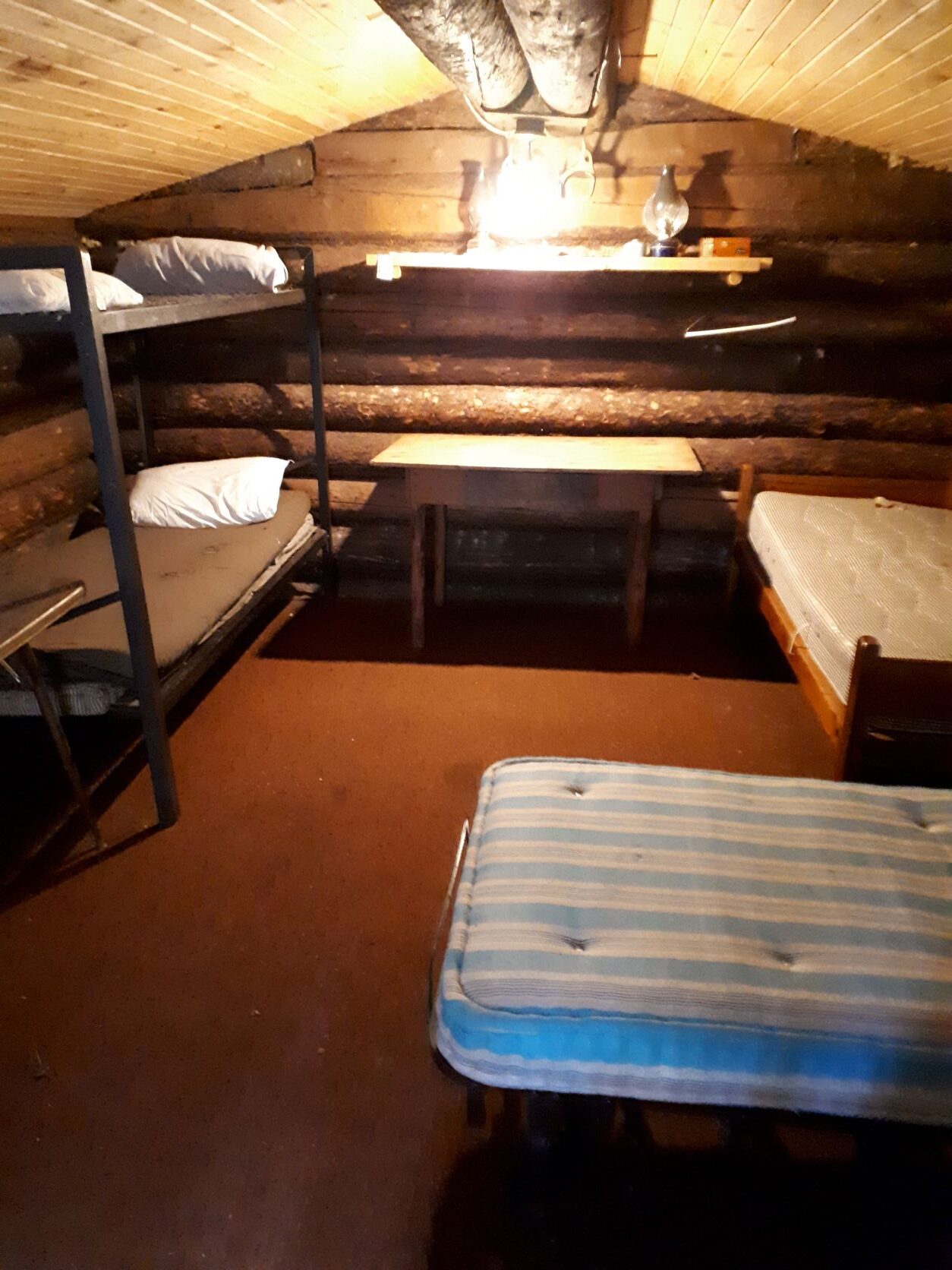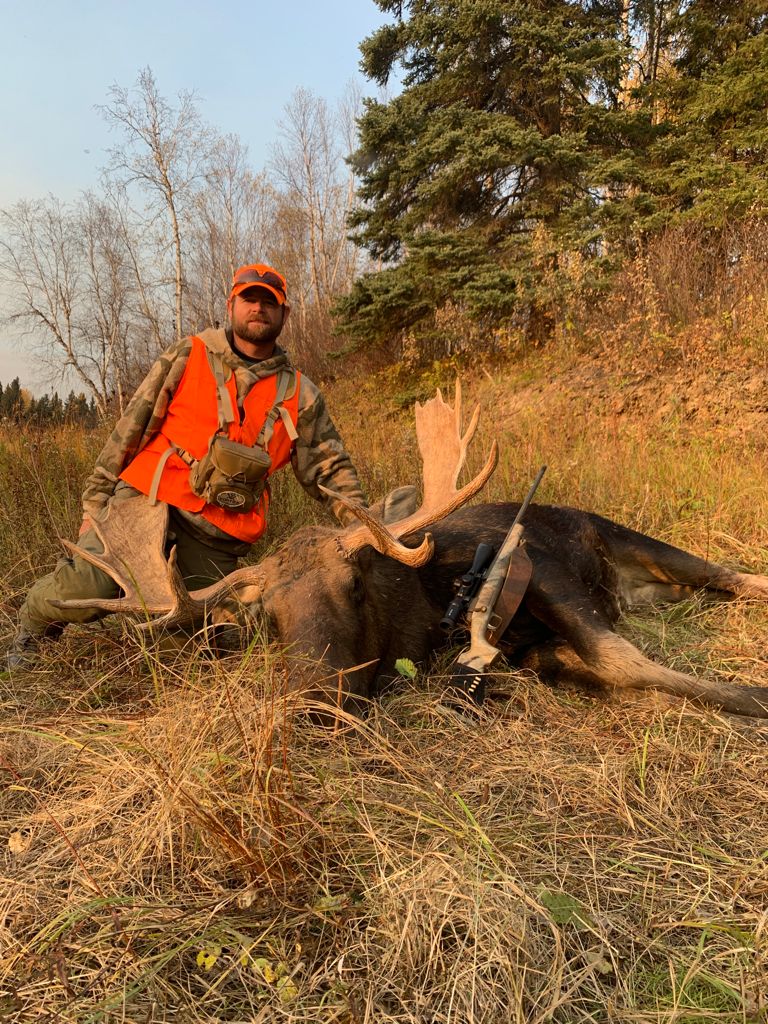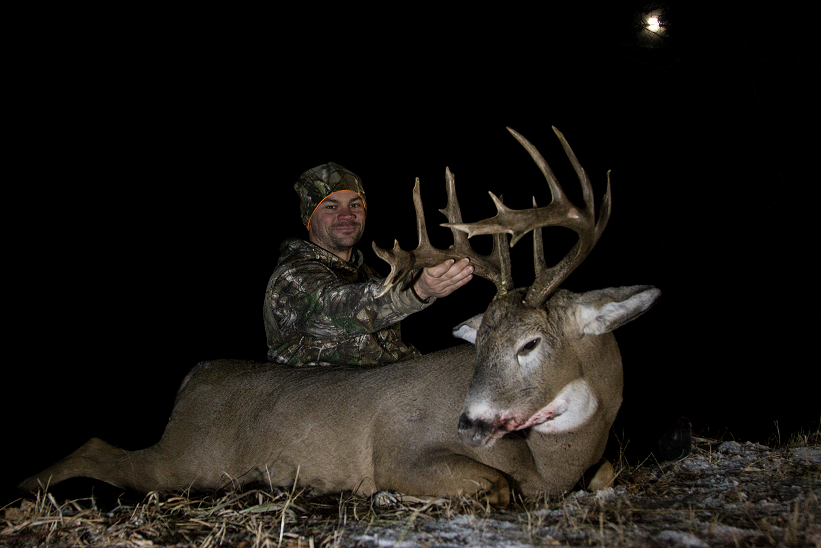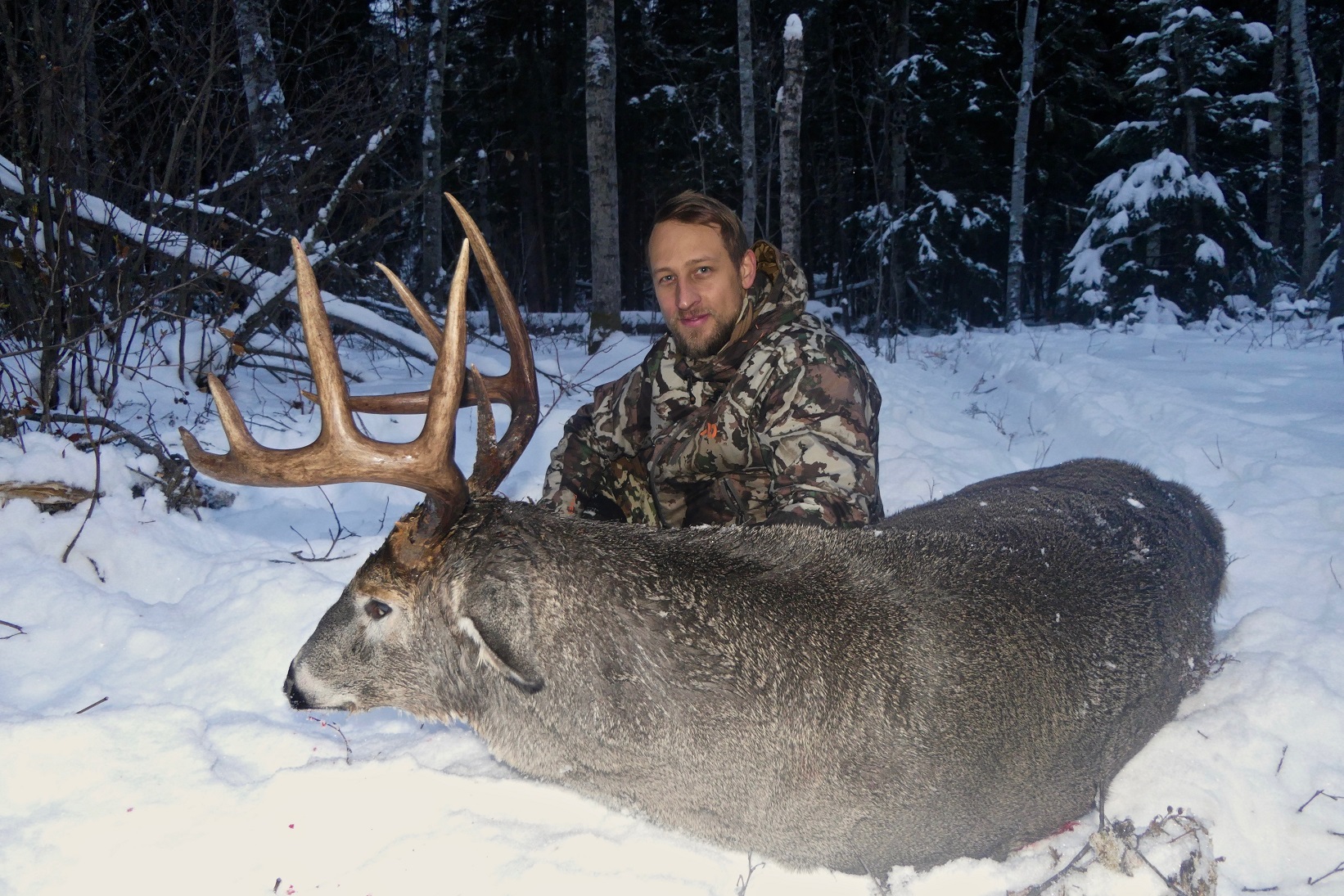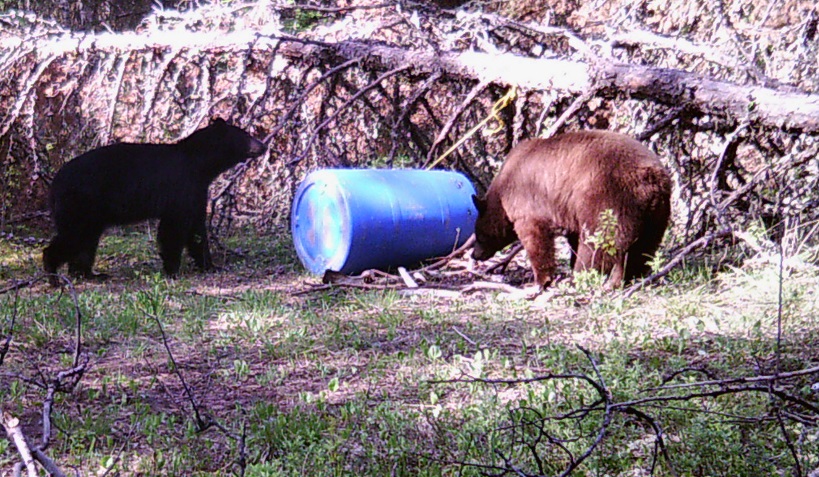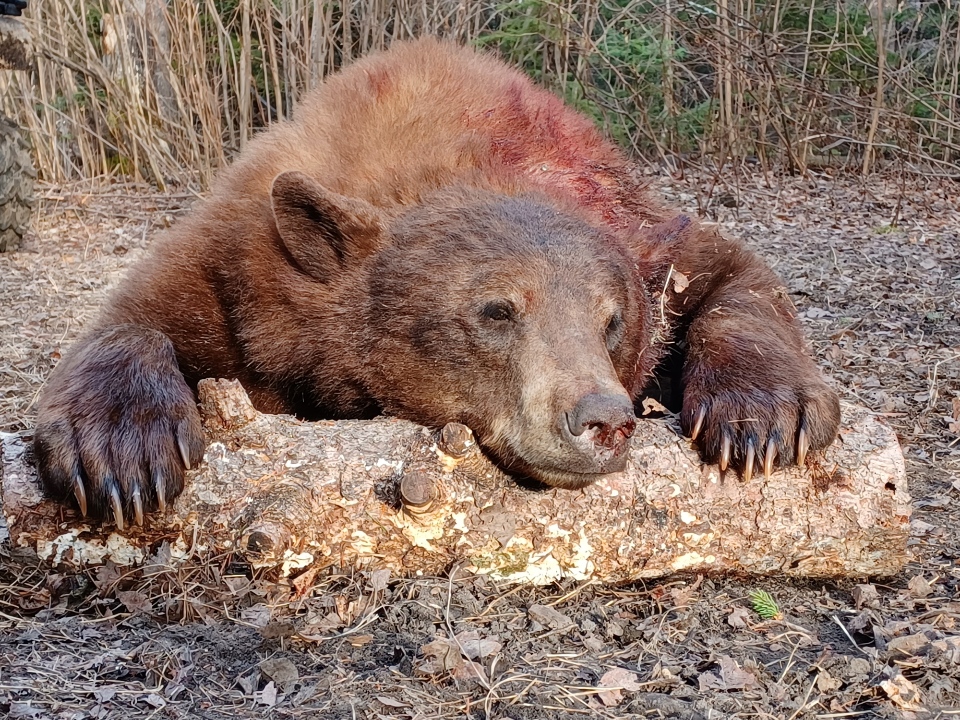Hunt Nation has been working with this outfitter for over 10 years, booking clients into his very good British Columbia hunts for moose, sheep, bear and more. He likes to hunt hard and pushes to succeed, all attributes of any good outfitter. A couple years ago he began investigating black bear and deer hunting opportunities in Saskatchewan, to extend his season. He found an area of 1,000 square miles of wilderness (no roads) and acquired the guide rights, and now offers black bear, whitetails and moose hunts there. Depending on the species being hunted, you may sit on stand, prowl the woods, use boat, canoe or ATV to get around. You might float for moose, or sit on baited stands for bear or deer. And all of it is done at very reasonable prices. This outfitter has an exclusive guide area – nobody else can provide guided hunts in his area. All tags are OTC.
BLACK BEAR, WHITETAIL DEER
Hunters arrive in camp in the afternoon on day 1, then you will hunt days 2-7 (afternoon and evenings hunts for bear; they leave the stands alone in morning so as not to spook the bears off the baits). You depart on the morning of day 8. This gives you 6 full days of hunting for deer (bear hunts are 1 day shorter). The camp is located 10 miles past ‘the end of the road’. It is their base camp, an old-school trappers camp on the banks of the Torch River. To get there you will probably travel by all three methods – 4WD truck, ATV, and boat. We like that it’s tough to get there – ensures unpressured animals. Modern upgrades include a generator for basic electric service (lights, etc.), a shower house (with hot water on demand), and WIFI (via satellite). Please note that the toilet facilities are an outhouse. There is no phone service. We recommend that you ignore the WIFI and enjoy the wilderness experience. These bear hunts are not physically demanding, but you must be able to get around – meaning able to get in and out of boats, up and down river banks, and you must be able to travel on quads over rough terrain. The outfitter sets high standards and expects that all their hunters will harvest mature boars.
The deer hunting in the fall/winter can means snow and ice, making for a more difficult adventure. You must be able to walk and travel under these circumstances. They use grounds blinds then, and heaters are available.
There are multiple pre-baited stands, all pre-scouted with trail cameras, so the guides can select the best stands for you. Guides do the deer/bear retrieval, skinning & prep for transport home or to a local taxidermist (usually freezing). Deer can be quartered and packed into quarters, but outfitter will not ship meat. There is no meat processor in the area, but meat can be donated.
There is fishing available in the river at camp. The quality of the fishing varies significantly with the water levels.
They manage harvest rates very carefully. They expect hunters to hold out for a mature buck ~140” class or better. We assume you are not coming to Saskatchewan to shoot a deer you could easily get at home. Opportunity rates on ~140” class (or better) deer are very high, unless you shoot a 120” buck on day 2! Most hunters will see multiple bucks/bears.
Accommodations are in 2 log guest cabins. Groups of 4 are ideal and will have the camp to themselves, but they can also accommodate a group of 5 or 6 hunters.
Meals consist of a breakfast, then a large late lunch (main meal of day), and lastly a very late supper (light meal following pick up from stands after dark). There is a cook preparing all meals. Guides provide transport to & from stands (via boat and/or ATV).
MOOSE
They also offer a very limited number of moose hunts at the beginning of October (season opens October 1). Any bull moose is legal in Saskatchewan, but they look for 40”-50” moose. These are 1×1 hunts only (no room for observers either, unfortunately), typically with a maximum of 2 hunters per camp, to give every hunter their own stretch of river to hunt. These hunts are conducted via canoe, mainly out of a secondary camp about 10 miles downstream, and spiking out in tents from there. The main base camp can be utilized too (including for observers), for older hunters or those with less mobility, but the best hunting is further away and harder to access. Most hunting is done along small rivers, using canoes and/or boats, so all hunters must be able to get in & out of canoes, boats and ATVs (river banks can be steep and muddy, and there are no docks or established camps sites). These are wilderness hunts, and hunters must generally be willing and able help pack canoes, gear, moose meat, etc., up, down and around rapids and wherever else it needs to go, although the outfitter can make accommodations based on the hunter’s fitness level, experience with canoes, and sense of adventure.
They enjoyed another good season in 2023, with 11 out of 14 hunters shooting a bull moose, 9 of which were average or above-average bulls.
2024 PRICES (subject to change without notice until deposit is received; all prices in USD)
WHITETAIL DEER: (FULL FOR 2024)
Please note that while the later dates are during the rut, the October hunts offer usually milder weather and more predictable/patternable bucks.
SPRING BLACK BEAR: $3,900 plus license (approx. $550) and taxes. Total = $4,431 per person 2×1. 5-day hunt.
MOOSE: $9,400 per person 1×1, plus license, taxes and charter plane (total approximately $13,000) per person). 7-day hunt (adding extra days may be possible at $800/day). It may be possible to add deer or bear for $1,000 each plus $1,500 harvest fee each.
Prices do not include transportation to/from the hunting area. Typically, you will fly to Saskatoon and then rent a vehicle.
GETTING YOUR WEAPON INTO CANADA
You are allowed to bring your personal firearm with you. This includes your rifles, shotguns or muzzleloaders (NO HANDGUNS, SUPPRESSORS OR AR-15-TYPE RIFLES!). For your firearms, a simple one-page form is required to be filled out to obtain a temporary Canadian firearms permit. This form can be down-loaded or mailed to you well in advance from The Royal Canadian Mounted Police at https://www.rcmp-grc.gc.ca/wam/media/2347/original/d369a605ac3363b569af5ea5dc40c88d.pdf. Click on the link for the NON-RESIDENT FIREARM DECLARATION (form RCMP 5589/CAFC 909). Completing this in advance should reduce your time clearing customs. DO NOT SIGN IT UNTIL YOU APPEAR IN FRONT OF CUSTOMS, but fill it out. A confirmed declaration costs a flat fee of $25, regardless of the number of firearms listed on it. It is only valid for the person who signs it and for those firearms listed on the declaration. It is a simple form to fill out. NO FORMS ARE REQUIRED TO BRING YOUR HUNTING BOW INTO CANADA! NO HANDGUNS, AR-15s OR SUPPRESSORS! IF YOU HAVE A DUI OR A CRIMINAL RECORD, CALL US! YOU MAY BE DENIED ADMITTANCE.
TO PREVENT PROBLEMS WHEN RETURNING TO THE UNITED STATES, YOU MUST REGISTER YOUR FIREARMS AND RELATED EQUIPMENT BY TAKING THEM TO ANY CUSTOMS AND BORDER PATROL (“CBP”) OFFICE BEFORE YOU LEAVE THE UNITED STATES. THE CBP OFFICE WILL REGISTER THEM ON THE SAME CBP FORM 4457 USED TO REGISTER CAMERAS AND COMPUTERS. PLEASE NOTE THAT YOU OFTEN CANNOT SIMPLY DO THIS AT THE AIRPORT WHEN LEAVING THE U.S., SO YOU SHOULD DO THIS IN ADVANCE OF YOUR TRIP.

